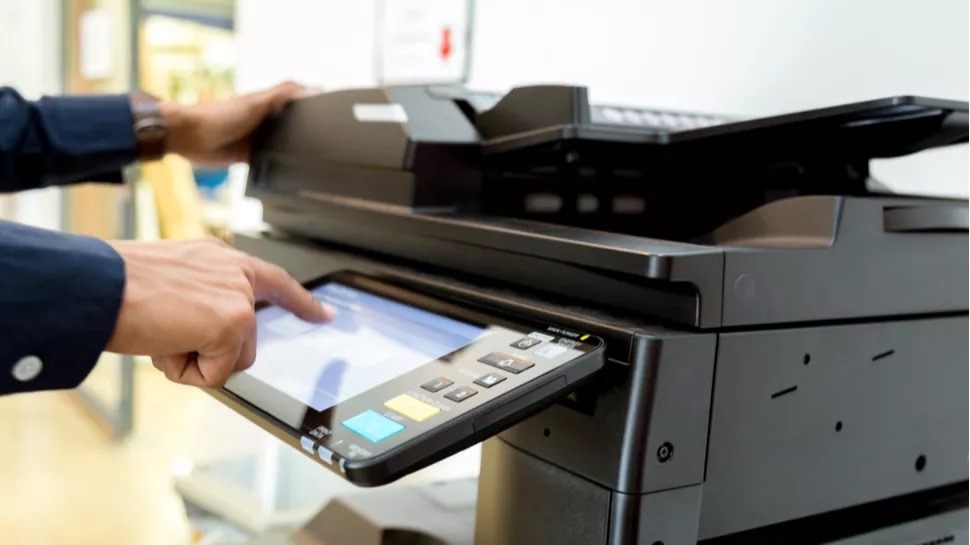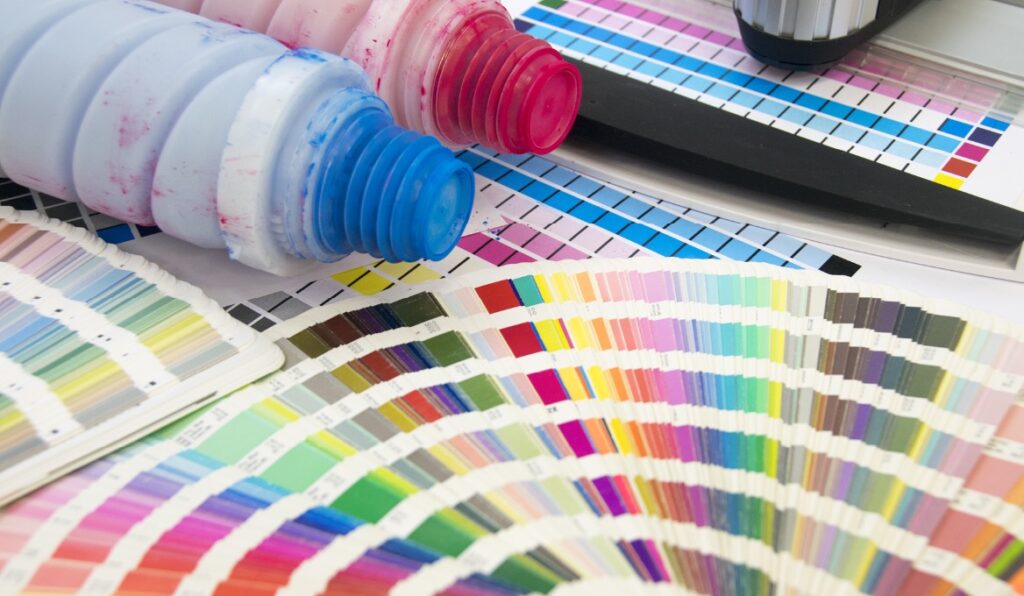Living in a world without printers is downright unthinkable. You wouldn’t have that “print” option on your computer. You’d need to write by hand to share your files or send a softcopy.
How weird would it be?
The 1957 innovation of laser printing is something we ought to appreciate. This piece takes you through the whole process.
Bước 1: Sending

The laser printing process will begin when you press that print button. Your computer will break down the data and send it to the selected printer. The goal is to transfer the digital data into paper.
Bước 2: Cleaning
Printers leave toner residues after each print. Your printer will clean these residues when you send the next print job. The printer cleans the OPC drum with the help of electrical charges. The process clears all the toner on its surfaces and prepares it for the next printing job.
These toner remnants are scraped and directed to the waste toner. Some electrical charges may remain after the process. There is an electrostatic erase lamp that will defuse these charges. This ensures that the charges don’t cause errors in the next job.
Bước 3: Conditioning
Laser printing relies on electrical charges. The paper needs to be charged to attract the toner. The drum unit, too, needs to be charged. All this charging happens at this step, now referred to as conditioning.
Want to know how it happens?
Well, it all starts with the primary charge roller. It will spin the organic photoconductor drum, which triggers the ions on the corona wire. These ions will then coat the drum supplying it with static electricity. This is now the beginning of the process of electro-photography. The organic photoconductor will gain a negative charge once the revolution is complete.
Bước 4: Exposing
The next step is exposing the photosensitive drum to a laser beam. When exposed to a laser beam, the surfaces of the drum will drop to 100 volts. A layer of electrons will then form an image on the OPC drum. This image will be printed on paper at the end of the printing process.
The laser beam will then strike the toner cartridge, driving away the darkness. The laser then bounces on a spinning mirror with many sides. This breaks the beam, which ends up in countless rays of information. The rays will spray the OPC drum turning the charges positive. The drum was previously negatively charged.
The drum unit is then presented with the information on what the print job will look like. It’s equipped with details of exact colors and densities. Tại thời điểm này, the positively charged image is ready to be placed on the sheet of paper. ;
Step 5: Developing
The developing stage is made possible with the help of opposite charges. The latent image formed in the former step is positive. Ngược lại, the toner particles are negatively charged. Then OPC drum and toner are brought close together. The drum will then absorb the toner to match the patterns of the positively charged latent image.

The toner appears in four colors: Đen, Cyan, Magenta, và màu vàng. The toner color combination is termed CMYK. The toner is typically made of about 90% plastic crashed into fine particles. The other percentage consists of colored pigments, control agents, and fumed silica.
Silica prevents the toner from sticking together. It also ensures that the toner can flow naturally out of the cartridge. Toner should not clump together at any point as it will interfere with printing.
The controlling agents help keep the toner’s negative charges. These agents are iron, chromium, and zinc will.
The following pigments give the color difference:
- Yellow toner uses Benzimidazole, which is naturally yellow
- Magenta uses, 9-Dimethyl-Quinacridone
- Cyan uses Copper Phthalocyanine
- A black toner is composed of black carbon powder with some crashed plastic
Step 6: Transferring
Once development is done, transferring process sets in. This is when the toner is transferred onto the paper. The paper is sprinkled with toner in patterns matching the print job.
This process also relies on opposite charges. The toner is negatively charged, and the paper must bear an opposite charge.
The paper is pulled from the paper tray and passes through the transfer roller. This roller will positively charge the sheet of paper.
The sheet of paper will then attract the negatively charged toner particles. It draws each of the four toner colors. This depends on the color of the print job and the patterns already formed. The process is precise as it’s done based on the instructions from the laser. It makes the colors blend in the proper proportions.
Step 7: Fusing
Fusing marks the final stage of laser printing. Magnetic energy is the only mechanism making toner stick on the paper in the previous steps. Toner will start smearing the sheet if it comes out that way.
The toner needs to stick permanently. That is why the printer subjects heat and pressure all the same time. This happens in the fuser unit. When heated, the toner will melt and stick to the piece of paper. The temperatures and pressure are sensitive. It should be able to melt the toner to stick to the paper. The fuser heats up to around 225oc within seconds.
There is a risk of paper sticking to the fuser rollers. That is eliminated with the help of a Teflon covering the fuser. The temperatures are high, and papers could easily catch fire. The process also happens within seconds to prevent that risk.
Excess toner is likely to remain during fusing. The printer is fitted with a blade that wipes the toner into a waste bin. Users will usually need to empty that bin when full. Your printer will let you know when it’s time. Printers will then erase the charges left on the surface in preparation for the next print job.
Laser printing animation:
Precautions to Remember While Using a Laser Printer
Laser printers are complicated. They work with precise principles, and anything can go wrong. Proper use of your printer will help you avoid messing it up.
Here are some precautions to keep in mind:
1. ;Don’t Touch the OPC
The OPC drum is the heart of laser printing. Any mess to this part could cause you sleepless nights. It’s a delicate component that works with precise electrical charges. If the OPC gets bruised, the marks will permanently appear on your print documents. If you touch it, the oil in your hands will affect the electrical charges. This will result in poor print quality among a host of problems.
2. ;Don’t Touch the Fuser Unit After a Print Job
Fuser unit heats up to 225oC will printing. It gets hot and could burn your hands. Wait until your printer cools down if you need to open and access some inner compartments.
3. ;Ensure Your Papers don’t Have Staple Pins
Most of your printers’ inner compartments are delicate. Be careful to remove pins if you need to print recycled papers. Staples will damage the OPC and the transfer belt. It will cost you a lot to replace these parts.
4. ;Use Quality Toner
Poor quality toner could cost a host of problems in your laser printer. That’s not the reason to stick to the original cartridges, mặc dù. There are compatible toner cartridges that get the work done.
Chúng tôi đã ở trong ngành này được mười năm rồi. We promise quality and affordability in all our products. Consider us for your next order.
